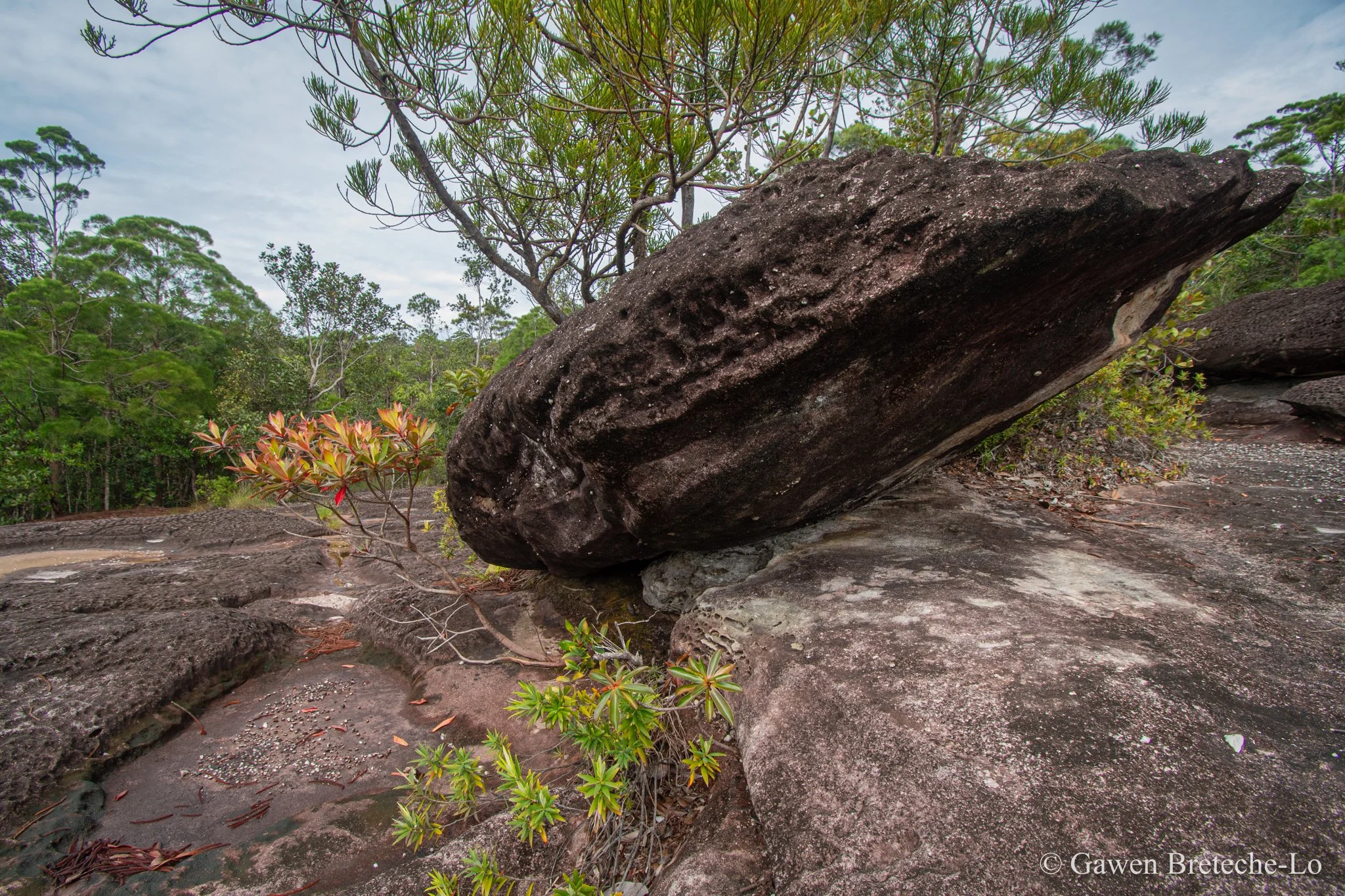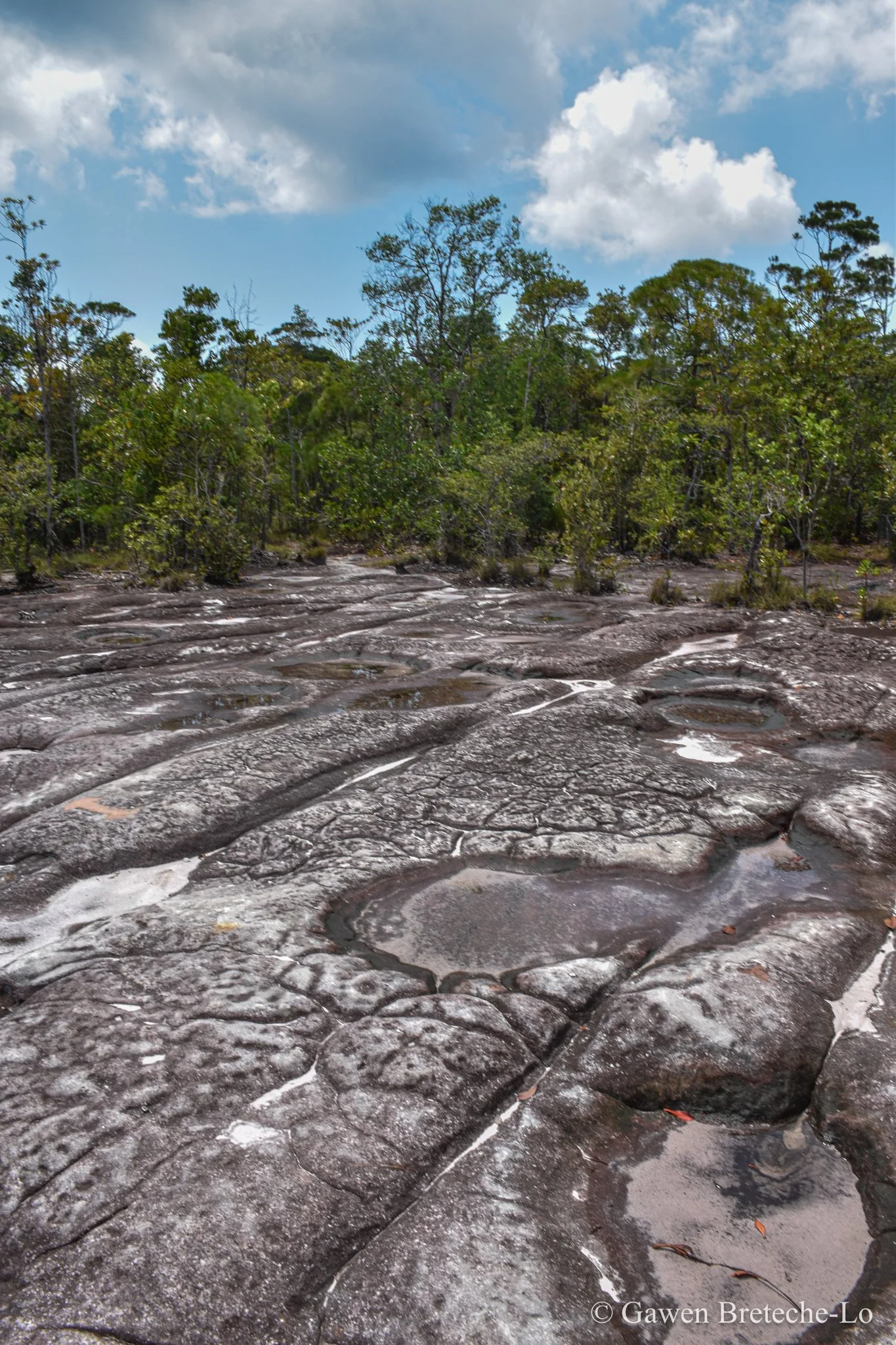Guiding Certificate and some Birds from Bako NP
In early September I spent 2 weeks in Bako National Park, with the purpose of obtaining my park-specific guiding license, a course that SFC (Sarawak Forestry Corporation) seems to conduct once in a blue moon. Obtaining the license during this period was pretty important for me. Not only as I am getting more serious about nature guiding, but also due to the recent announcement of mandatory guides for all national parks in Sarawak, effective next year (2026), a decision that will mean big changes for our tourism industry.
Bako is 99% sandstone. Years of weathering creates otherworldly landscapes, sweeping cliffscapes, and a plateau reminiscent of Mars.
This 2 week course pools together 30 candidates, selected through an interview process, and covers the general gist of guiding, interpretation skills, wilderness 1st aid, flora and fauna of the park, geology and more. With what little time I had outside classroom and practical sessions, I knew this was the perfect opportunity to catch up on my bird photography.
Images are clickable, and captions are stored in the enlarged view.
Bako National Park is home to well over a hundred bird species. Its position below the South China Sea, and year-round warm climate invites numerous migratory birds during the northern winters. Many of those winter visitors are shorebirds, however this trip I focused on inland forest-loving birds, and spent less time wandering the beaches.
For a relatively small park, Bako crams a lot of different forest types within its borders, so allocating time to different areas of the park usually yields a variation of species. However due to my time restrictions, I didn’t get to venture deep enough into the lowland dipterocarp hinterlands further from the coast, so I definitely missed out on some notable birds.
Above are examples of heath forest approaching the moon-like plateau. It is generally dominated by stunted trees and shrubbery with waxy or needle-like leaves, and is where the majority of carnivorous plants like Nepenthes and Sundews are located; which thrive in poor sandy soils. Fewer species of birds are found here, yet is still 100% worth visiting. It is an excellent place to see raptors soaring overhead.
For those pressed on time, I would recommend:
Just around the headquarters: fruiting trees will bring in barbets, fairy bluebirds, spiderhunters and colourful sunbirds, and are super convenient to access
Mangrove boardwalk: you’ll have to go early when the sun is soft or when it’s cloudy, but many birds forage through here, like malkohas, drongos, ioras, tailorbirds, herons and shorebirds
Telok Delima and freshwater swamp boardwalk: great for kingfishers, babblers, woodpeckers, and other forest birds. Light is usually a premium here though, so be prepared to crank your iso
Bako gets extremely hot, extremely fast. Your best bet with getting good lighting for bird photography is early morning and close to sunset. However, for day-trippers this is near impossible due to boat timing (there’s only so early you can get here, and the last boats back wrap up just after 3pm). For a better chance to photograph, I would highly recommend spending the night to maximise your time out in the forest. This gives you more time to actually appreciate the landscape, flora and other animals, spend longer primate watching, and some nighttime photography for coastal herps.




















